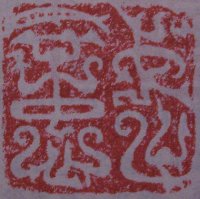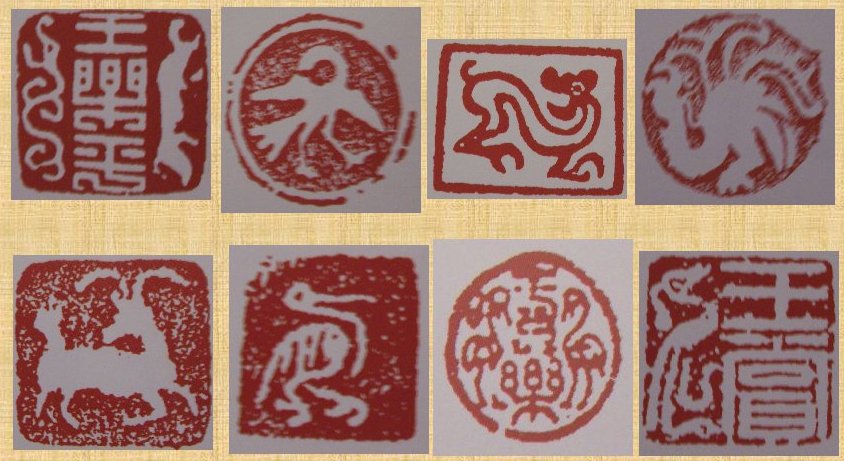
Spring Autumn & Warring States Periods
Spring Autumn Period (c. 800-300 BC)
The
earliest examples of seals of the Shang Dynasty were found from the
archeological sites at An-Yang. However, very little is known about their usage
at this early time. So starting from the Spring and Autumn Periods, we begin to
see large quantity of seals paired with textual references to them.
During
the Spring Autumn and Warring States Periods, seal scripts were in the styles of
Bird and Worm Zuan Shu.

Warring States Period (770-221 BC)
During
this period, seals were used on mud, name certification, utensils, coins,
decorations, and etc.
Until
the end of the Warring States Period, seals were classified primary into
official or private regardless of
their use and material. Official
seals have been conferred to officials as a token of their office and authority.
The official seals were called
“Xi” and in the following periods gradually became the designation for
imperial seals.
Originally,
a seal was the symbol of power, status and order of feudal societies in China.
For instance, Su Chin, a famous politician during the Warring States Period was
once in charge of the seals of the prime ministers of the Six States. This was
regarded as the highest achievement in the political arena by many historians.
However, through a long history of development, people began to pay more
attention to the aesthetic values of seals and such carving has eventually
evolved into a type of pure art in China.
From
the Warring State Period to the Han, Wei, and Jin Dynasties, images and
pictorials of animals were also engraved onto seals. Those “image seals”
became very popular during the Han Dynasty.
